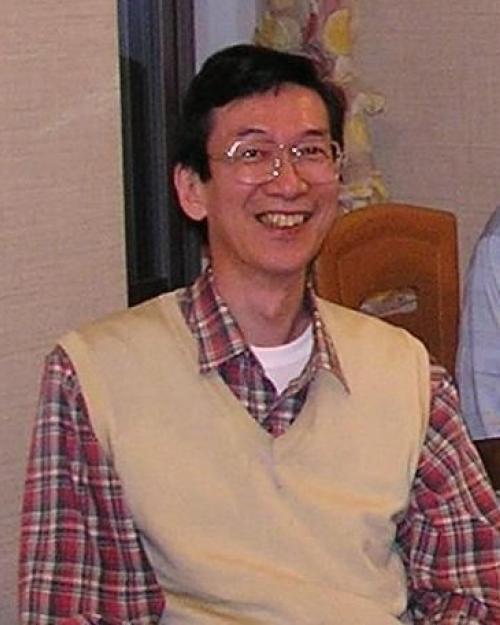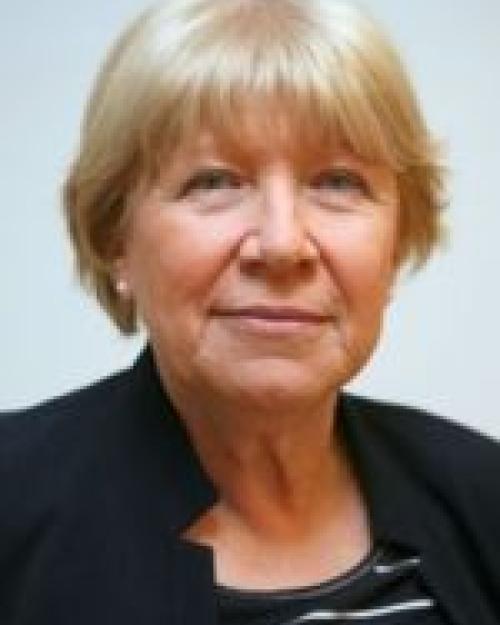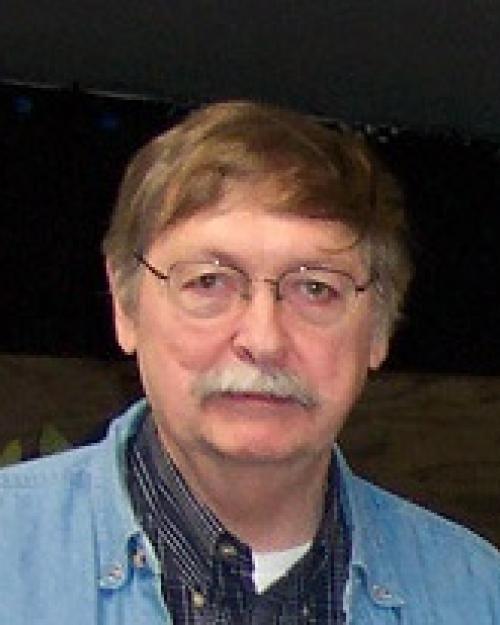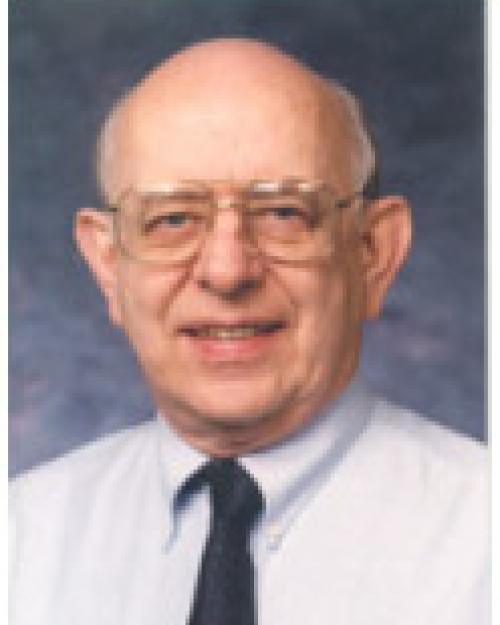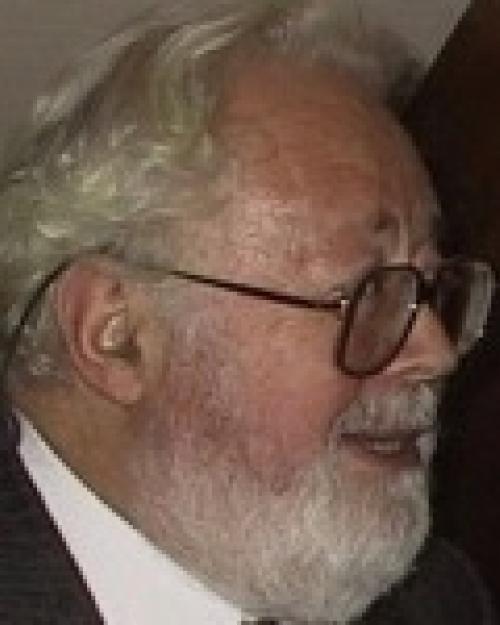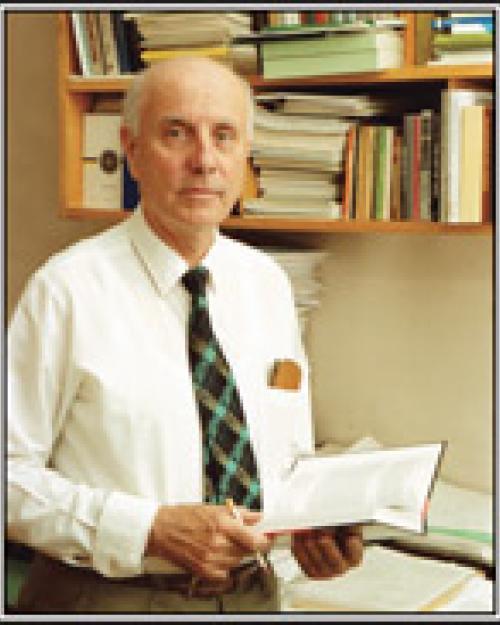-

Gerald Farnell
-Gerald W. Farnell – Professor Emeritus With great sadness, we announce the passing of Gerald Farnell at the Verdun General Hospital on April 30, 2015. The son of Alice (Turner) and Jack Farnell, Jerry was born in Toronto on August 31, 1925. He was a proud and grateful Canadian who had an abiding affection for Montreal and the province of Quebec, his home for the last 65 years of his life. After graduating from Danforth Technical High School in 1942, he served in the Canadian Army and began his studies at the University of Toronto as a member of the Army Officer Training Course. In 1950, having earned a Master of Science degree from the Massachusetts Institute of Technology, Jerry arrived at McGill as a lecturer and PHD Graduate Student. While at McGill he served as Professor of Engineering Physics and Electrical Engineering, including terms as Chairman of the Electrical Engineering Department (from 1967 until 1972) and Dean of the Engineering Faculty (from 1974 until 1984). In 1991, he retired from McGill as Professor Emeritus. During his decades at McGill, Jerry gained a reputation as a dedicated and enthusiastic teacher. In collaboration with colleagues and graduate students, he registered three patents, published 93 papers and earned international recognition for his research on the propagation of Acoustical Surface Waves in anisotropic materials leading to the development of radio frequency filters, now ubiquitous in mobile phones. As a Nuffield Fellow he spent 1960-61 at the Clarendon Laboratory in Oxford and became a Fellow of IEEE in 1970. From 1972 to ’73, he was Engineering Consultant for Thomson CSF in Cagnes sur Mer and Visiting Professor in the Laboratories d’Electrooptique at the Faculté des Sciences in Nice, France. Elected president of the Ultrasonics Society, he served from 1988-1989, received the IEEE Achievement award in 1991, the Distinguished Service Award of the Society in 1997 and the Lord Rayleigh Award in 2001. A Fellow of the Royal Society of Canada in 1996. Jerry was one of the first to give a course on “semiconductors and transistor electronics” at a Canadian University. Although he was left with a bothersome knee, Jerry had fond memories of playing high school football, recreational basketball at U of T and sailing at the Royal St. Lawrence Yacht Club. In later years, he continued his lifelong joy of reading and revived an interest in playing duplicate bridge. Remembered as a talented “doodler” during professional meetings, in retirement he bestowed among family and friends a noteworthy number of his impressive acrylic paintings. Jerry is survived by his wife of 66 years, Norma (McRae); his daughter Sandra (John Peacock); his son Douglas (Anne Tchipeff); his sister Doreen (Al Thomsen); grandsons Anthony Farnell (Samantha Guedes) and Alexander Farnell (Annie Rivard); granddaughters Erika Moisl (Remi Lacroix) and Katherine Farnell (Maxwell Insley); and great-grandson Evan Insley. His presence among us will be sorely missed but the memory of him as a cherished husband, a devoted father and grandfather, a loving brother and a loyal friend will remain in our hearts forever. Minor editing of the version published in The Montreal Gazette from May 5 to May 9, 2015

Robert H. Kern
-Mr. Robert H. Kern died June 4, 2015 in Danvers Massachusetts at the age of 85 at the Kaplan Family Hospice House in Danvers, Mass. He was internationally recognized as one of the foremost designers of cesium beam tubes and innovator in the time and frequency community. Born in New York City, he was the son of the late Carl Henry and Helen L. (Victor) Kern. He was raised and educated in New York City and was a graduate of Cornell University. He earned both his BSEE (1955) and MS (1956) Degrees from Cornell University in Engineering.
He served two years on active duty with the U.S. Air Force and was assigned as a Base Communications Officer in the U.K. From 1962 to 1969 he was associated with the Quantum Electronics Division of Varian Associates where he was directly responsible for the early development and production of cesium beam tubes. During his tenure at Varian/QED it was acquired by Hewlett Packard and reorganized into the Frequency and Time – East Division of Hewlett Packard. Continuing with Hewlett Packard – East Division, Mr. Kern was responsible for the design and engineering of cesium tubes which were utilized in thousands of standards throughout the world. In addition to his association with Varian and HP he held the position of Senior Scientific Executive with EG&G, Inc. and Senior Research and Development engineer for CBS Electronics. In 1971 Mr. Kern founded Frequency and Time Systems (FTS) and served as President and General Manager. During these early years in the 1970’s he became involved with the U.S. Naval Research Laboratory and their navigation satellite program to develop precision atomic clocks for satellites. FTS supplied, in cooperation with the Efratom company of Munich, several Efratom FRK rubidium frequency standards for experimental use on board the Navigation Technology Satellite One (NTS-1) that was built by the U.S. Naval Research Laboratory and launched 14 July 1974. This technology satellite was the first satellite launched in the newly formed NAVSTAR Global Positioning System (GPS) program and the first to place atomic frequency standards in orbit. The Efratom RFK units were selected by Rockwell International for use in the Block 1 GPS satellites built under contract to the GPS Joint Program Office. At FTS Mr. Kern was responsible for the design and development of a new generation of space qualified cesium beam tube frequency standards suitable for use in space and in severe dynamic environmental situations. The first prototypical cesium beam frequency standards were developed and launched into space in 1977 aboard the NTS-2. This satellite was the second one launched as part of the NAVSTAR GPS program and was the first to transmit the full complement of GPS navigation signals. The prototypical units incorporated into NTS-2 became the basis for the exploratory development, advanced development and pre-production cesium beam frequency standards built by FTS culminating in the production cesium standards for the operational GPS satellites. These cesium clocks provided the highly stable and reliable signals that contributed greatly to the success of GPS Blocks 1, 2, and 2A satellites. However, in 1978 Mr. Kern sold his interest in FTS and founded Kernco, Inc. of Danvers, Mass in 1979. He also served as President and General Manager of this company. He began the development of an alternate source of space qualified cesium beam frequency standards flown in GPS block 2A and a smaller, more capable cesium beam standard. His achievements in leading Kernco included the development of quartz oscillators flown on many of the latter block IIR satellites, development of thermal vacuum chamber systems for long term testing, small vac-ion pumps, timing instrumentation and his later work exploring alternative technologies for future satellite Standards. Mr. Kern holds eight seminal patents in the field of cesium beam technology. A resident of the Town of Danvers since 1960, Bob was a member of the Association of Old Crows, the Aircraft Owners and Pilots Association and was a member of the Maple Street Congregational Church of Danvers. In his free time he enjoyed boating, swimming, tennis, and fishing in the summer on Highland Lake in Maine with his family and friends. He was an avid outdoorsman who enjoyed skiing. Bob was preceded in death by his first wife, Janet Marie (Upson) Kern. He is survived by his wife of 32 years, Evelyn (Eshleman) Kern of Danvers; his son, Andrew Carleton Kern and his wife Brenda of Delaware, Ohio; his daughter, Joanne Kern McDermott of Irvine, California; and his grandson, Adam Henry McDermott.
Yasuo Ebata
-Dr. Yasuo Ebata passed away calmly, May 13, 2013, expressing volumes of his gratitude with a smile to his wife Noriko-san, at Shonan Kamakura General Hospital in Kamakura, Kanagawa Japan after a long battle with
rheumatoid arthritis and related troubles.
He made many seminal contributions to the science and technologies of SAW devices using metal grating. SAW device is one of passive electronic devices which are
produced mainly by companies in Japan today. Electro mechanical device, such as a SAW device, is one of Japanese
traditional specialties originated by Prof. I. Koga. Ebata-san played important role to hand over it to next generation. He was born June 24, 1948, in Tokyo. In 1971 he graduated from Department of Electrical Engineering, College of Engineering Yokohama National University with B.S.E.E. degree and received his PhD in Electrical Engineering for research on SAW resonator using metal grating reflector from Tohoku University in 1988. In 1971 he joined Toshiba and engaged on research and development of SAW devices at Research and Development Center and moved to the Operational Division to commercialize SAW devices in 1987. In 2002, Ebata-san was temporarily transferred to Fujitsu Media Devices (FMD) according to transfer of SAW business to Fujitsu and moved to FMD in 2004.
He retired from FMD October 2008. Typical examples of commercially succeeded SAW devices, of which he contributed the development, are as follows SAW resonators for VCR RF modulator SAW filters for pager, cordless telephone, etc. SAW filters and duplexers for cellular phone and PHS
Ebata-san published more than 60 technical papers and applied more than 100 articles
for a patent. He received OHM Technology award in 1984. Ebata-san had distinguished career as a secretary or member of many committees including, Japan Society for the Promotion of Science University-Industry
Cooperative Research Committees 150th committee on Acoustic Wave Device Technology IEC TC49 WG10-1 SAW Device
IEE Electro Mechanical Functional Device Committee Technical Program Committee for IEEE US Symposium During long life under medical treatment, he did never lose a smile and consideration for other people. Ebata-san is survived by his wife Noriko-san, two daughters and two grandchildren.Clinton Hartmann
-Clinton Sylvester Hartmann passed away at his home in Dallas, TX, February 4, 2013, after a battle with osteosarcoma. He was born December 31, 1944, in Fredericksburg, Texas to Gretchen and Lawrence Hartmann and grew up on the family ranch. Clinton was an internationally recognized pioneer of SAW technology. As a scientist and an engineer, he had an outstanding ability to formulate new problems, to generate new ideas and approaches, and to identify the tools needed for the practical implementation of solutions. During his 40-plus year career, Clinton invented many SAW devices that are in common use today, including key enabling devices which are used in cellular telephones, pocket pagers, video tape recorders, automotive keyless entry systems, color television sets, garage door openers and many others. Clinton graduated from the University of Texas with a B.S.E.E. and received his M.S.E.E. degree from the Massachusetts Institute of Technology. After completing his thesis, his course work, but prior to completing his PhD, he left to begin work. Although he formally had no title of PhD or Professor, many of his colleagues, having such titles, regarded him as their Teacher. Clinton began his career at Texas Instruments in the Central Research Laboratories where he began his work on Surface Acoustic Wave (SAW) devices. In 1978 he was recognized as a TI Fellow for his work in the field of Surface Acoustic Wave devices and applications. In 1979, Clinton co-founded RF Monolithics, Inc. of Dallas, Texas (RFM). From 1979 to 1984, his research and development activities at RFM included contributions to SAW resonators, single-phase unidirectional transducers (SPUDTs), coupling-of-modes (COM) analysis and other SAW technologies.
In 1985, Clinton founded Hartmann Research, Inc., an independent SAW research company, at which he invented and developed SAW device types including the EWC/SPUDT, the key filter in color television sets and is used in cell phones. In the years 1991-1992 Clinton assisted in assembling the R&D division of ASCOM Microsystems (later Advanced SAW Products and then Micronas). In 2000, Mr. Hartmann founded his third company, RF SAW, Inc. From then and until his death, SAW RFID was the focus of his work. In 2006, NASA selected RF SAW’s RFID technology to test aboard the International Space Station as a possible method to streamline logistics and tracking of items for ground and space operations. Clinton published more than 100 technical papers and was awarded 51 US patents in SAW technologies. In 1976, Eta Kappa Nu, the electrical engineering honor society, named him The Outstanding Young Electrical Engineer in the United States. In 2000, he and Prof. R. M. White received the W. G. Cady award “For pioneering the early understanding of SAW devices”. Clinton was a Senior Life Member of the Institute of Electrical & Electronic Engineers (IEEE). Clinton’s passions included science, math, engineering, and mentoring others, as well as a tremendous love for his family, children, and grandchildren. He was a great mentor to many. During his last few months, he received numerous letters from many people whose lives were positively impacted by his constructive efforts. When asked about his lifetime accomplishments, Clinton did not want to be known for his multiple awards, but instead for his philosophies on education, giving, mentoring, and leaving the world in a better place than you found it. Clinton’s family has established an Endowment/Scholarship at the University of Texas at Austin to honor Clinton’s memory. Those who wish to help memorialize Clinton can consider a donation to this Endowment in his name.
Marija Kosec
-Professor Marija Kosec passed away after a serious illness on 23rd December 2012. Almost everyone called her Marička, a popular Slovenian version of the biblical name. She was born on 5th September 1947 in Šinkov turn, about 20 km away from Ljubljana, Slovenia, at that time one of the republics of the former Yugoslavia. She graduated in 1970 in chemical technology, received her MSc in 1975 and her PhD in chemistry in 1982 at the University of Ljubljana, Slovenia, under the supervision of Professor Drago Kolar. The topic of her Master Thesis was lead-free piezoelectric sodium potassium niobate, which, after being almost forgotten for about 25 years, became extremely popular with the revived interest in environmentally-friendly lead-free piezoceramics. Her first journal paper eventually became the seminal paper on sintering of this still not thoroughly-understood material. Her doctoral thesis involved the study of phase relations in calcium uranate systems, and within this period she mastered the techniques of thermal analysis. Beginning in 1971 she was employed at the Jožef Stefan Institute, Ljubljana, Slovenia, and in 1997 – 2001 she was Head of the Ceramics Department. In 2002 she became Head of the Electronic Ceramics Department. She performed a part of her doctoral research (1979 – 1980) at the Institute for mineral engineering of RWTH Aachen, Germany. In 1993 she was a visiting scientist at the Ceramics laboratory of Ecole Polytechnique Federale de Lausanne (EPFL), Switzerland. In the years 2004 – 09 she was also leading the Slovenian Centre of Excellence, called “Materials for electronics of next generations and other emerging technologies”, and since 2009 the Centre of Excellence “Advanced Materials and Technologies for the Future” (NAMASTE). Her main research interests included synthesis and processing of ceramics in different forms: particles, solution-derived thin films, thick films, 2D or 3D structures, bulk electronic ceramics, predominantly ferroelectrics and piezoelectrics. Her contribution was in understanding and thus controlling the synthesis of application-important multi-component oxides, mainly perovskites, both in solution, in colloidal systems or suspensions, in powder mixtures by mechanochemical or classical solid-state reactions and processes. Using extensive processing knowledge and skills, her group synthesized transparent electro-optic ceramics. The research of lead-free complex perovskites resulted in the discovery of a new group of relaxors and highlyefficient piezoelectric K0.5Na0.5NbO3 single crystals. In chemical solution deposition of ferroelectric thin films she explained complicated reactions taking place in solution, which allowed the processing temperatures of the films to decrease. She focused on the integration of thick films on different substrates for ceramic microelectro- mechanical systems (MEMS). She understood the importance of the processing-properties relationship, and she could extremely successfully cross the barriers of different backgrounds and terminologies, which was evident from her numerous collaborations with researchers from complementary fields of physics and electronics. Furthermore, she endeavored to merge basic science with applied research and development and to strengthen links between academia and industry. She was author or co-author of more than 300 scientific papers in international journals and about 15 chapters in books. She gave more than 150 invited talks at international conferences and at different research institutions including Max Planck Institut, MIT, Tokyo Institute of Technology, and at important Japanese producers of electronic components including Murata, TDK, Panasonic and Toshiba. In 2000 she chaired the Electroceramics conference, in 2003 the European conference Processing of Electroceramics and in 2006 the 4th European Microelectronics and Packaging Symposium. In 1999 she was appointed Professor of Materials Science at the University of Ljubljana, with courses at the graduate and post-graduate level. She was active in the Jožef Stefan International Postgraduate School, since its establishment in 2004, as its vice-president. She was a visiting professor at Ecole Polytechnique Fédérale de Lausanne (EPFL), Switzerland, Shizuoka University, Japan, and for short periods at a number of other schools. She was Adjunct Professor at Xi’an Jiaotong University, China. She was an inspiring advisor to many PhD students at the University of Ljubljana, Jožef Stefan International Postgraduate School and University of Oulu, Finland. Marija served as a member or chair of many scientific committees or advisory bodies in Slovenia. In 2007 – 2009 she was the President of the Scientific Council of Jožef Stefan Institute. She was the only female member of the Academy of Engineering Sciences of Slovenia and in the period 2005 – 2006 its president. She was an Ambassador of Science of the Republic of Slovenia (2003), recipient of the Zois award, the highest national science award, in 2006 and of the Puh recognition for the implementation of research results in industry in 2009. She was active in COST, European Cooperation in Science and Technology framework, since 1991, the year, when Slovenia became an independent country. Since 1999 she was a member of the European Liaison Committee of the International Microelectronics and Packaging Society. In 2001 she became a member of the Ferroelectrics Committee at IEEE. In 2010 she received the Ferroelectrics Recognition Award, IEEE Ultrasonics, Ferroelectrics, and Frequency Control Society for her significant contributions to the processing science and technology of ferroelectric powders, bulk ceramics, thin and thick films. Besides her work, Marija enjoyed numerous activities. She was often hiking and skiing with her husband. She knew where and when to find mushrooms and how to cook or preserve them. She grew vegetables and flowers in her garden and prepared herbal teas. Her optimistic approach to life in general and to her research in particular, her sharp mind and her extensive background knowledge, her sincere interest in people and her generous heart will be sadly missed. The Electronic Ceramics Department and the UFFC community will remember her as a special person, able to keep the whole group together and, at the same time, to give to each member of the group individually the right motivation. No words can really explain what Marija was and what she did for science and for people. She was simply Marička. Barbara Malič and Tadej Rojac Electronic Ceramics Department Jožef Stefan Institute Ljubljana
Slovenia
Kenneth Lakin
-Kenneth Meade Lakin died at his home near Redmond, OR, November 24, 2012, after an extended battle with prostate cancer. He was born January 14, 1941, in Grand Rapids, Michigan to Mabel (Meade) and Harold Lakin. Ken grew up in Portland, MI, and graduated from the Univ. of Michigan with B.S. and M.S. degrees in Physics, Mathematics and Electrical Engineering and received his PhD in Applied Physics from Stanford University in 1969. Dr. Lakin was a faculty member at the University of Southern California from 1969 to 1980, where he conducted research on surface acoustic wave devices, thin film resonators, and piezoelectric film growth and characterization. From 1980 to 1989, he was affiliated with Iowa State University’s Ames Laboratory and founded the Microelectronics Research Center. He formed TFR Technologies in 1989 and acted as President and CEO while conducting research on thin film resonators, piezoelectric materials, filters, planar dielectric resonators, and numerical analysis of electromechanical resonators for microwave frequencies. Ken retired from TFR Technologies in 2005. He published more than 100 technical papers and has 21 U.S. patents in the areas of acoustic signal processing devices and materials research. Ken was a Life Fellow of the IEEE and received the W. G. Cady award in 2003. In 2010 he was the recipient of the IEEE Ultrasonics, Ferroelectrics, and Frequency Control Society Achievement Award for “his pioneering work on aluminum nitride (AlN), AlN for Bulk Acoustic Wave devices (BAW) and being first to develop Solidly Mounted Resonators (SMR-BAW) and coupled resonator filters for BAW.”

Jean-Jacques Gagnepain
-
John A. Kusters
-
Sigfrido Leschiutta
-Dr. Sigfrido Leschiutta, Metrological Expert, Time and Frequency Researcher, and Renaissance man On May 12 2011, World Metrology Day, the international metrology community and the Italian community in particular were dealt a harsh blow when they learned of the death of Professor Sigfrido Leschiutta, a man who was widely known in a variety of cultural fields. Metrology was his primary field of activity, with a special focus on the measure of time and frequency. Initially, he did most of his research work at the Istituto Elettrotecnico Nazionale Galileo Ferraris (IEN) – now Istituto Nazionale di Ricerca Metrologica (INRIM) –, and later on at the Politecnico di Torino, where he taught as Full Professor. Dr. Leschiutta was president of the IEN (1994-2002), member of the International Committee for Weights and Measurements, chairman of the Consultative Committee for Time and Frequency, Chairman of the Metrology Commission of the International Union of Radio Science, and member of the Accademia delle Scienze di Torino. Among the most significant moments in his scientific career is the first experimental verification of general relativity by comparing atomic clocks positioned at different altitudes relative to the geoid surface, one at Plateau Rosa and the other at the IEN, and the resumption of research activities on atomic frequency standards. He also devoted his energy to the resumption of research activities on atomic frequency standards, and construction and improvement of the national time scale, which is of fundamental importance to pure and applied science. Thus he brought a more precise and reliable time to the fields of transportation, trade, banking activities, and countless other aspects of our daily life. Later, he became interested in the new methods for clock synchronisation through satellite time transmissions. In this area of research he was frequently asked to work on projects at the European Space Agency and the Agenzia Spaziale Italiana, where he also served as member and chairman of the Agency’s Scientific Council, and organized a program of high resolution distance measurements to a satellite in a geostationary orbit. These highly significant studies also served as a basis for his teaching activities. Animated by his interest in the progress of scientific knowledge, he also succeeded in attracting to the IEN scientists of international renown, so that they might transfer their experience and knowledge to the Institute. He was on the engineering faculty of the Politecnico di Torino, where he taught measurement and metrology courses, and he also taught at other institutions. As long as his health sustained him, he gave lectures at the Doctoral School of the Politecnico di Torino. In 1976, 2000 and 2006, he was in charge of the high level course “Metrology and Fundamental Constants” held at the International School of Physics “Enrico Fermi” of the Societá Italiana di Fisica (SIF). Among his interests there are also music and the study of ancient musical instruments. He enjoyed doing manual work and constructed musical instruments, radio apparatus, carpentry works. Open minded and generous, he addressed the problems encountered in his various activities with sensitivity and a strong sense of responsibility, and always treated with spontaneous cordiality all the people he came in contact with.

Robert Blinc
-It is a melancholy honor to report the passing of Professor Robert Blinc, one of the world’s leading condensed matter physicists. Robert was born on October 31, 1933, in Ljubljana, Slovenia. He graduated from the University of Ljubljana in 1958 and completed his PhD the following year with a thesis on proton tunneling in ferroelectrics with short hydrogen bonds, supervised by Professor Dušan Hadži. This began his study elucidating the isotopic effect of deuterium in ferroelectric crystals and the development of the tunneling model of hydrogen bonded ferroelectrics (known as the Blinc–de Gennes model), which has remained an active research topic until the present. After a postdoctoral year spent in the group of Professor JohnWaugh at M.I.T., he was appointed as a professor of physics at the University of Ljubljana. Robert was known for both his experimental work and for theoretical models. He began the NMR laboratory at the Jožef Stefan Institute in Ljubljana, where he spent exactly fifty years applying magnetic resonance to ferroelectricmaterials, liquid crystals, incommensurate dielectrics, pseudospin glasses, relaxors, and fullerenes. As recently summarized by Prof. J. Dolinsek, Robert and coworkers predicted the phason Goldstone mode in helicoidal ferroelectric liquid crystals, discovered the relaxation mechanism via nematic order fluctuations in liquid crystals (the Pincus–Blinc model), detected solitons and phasons in incommensurate systems using NMR, determined the Edwards-Anderson order parameter in proton and deuteron glasses, developed the random bond–random field Ising model of proton and deuteron glasses (the Pirc–Tadić–Blinc model), developed the spherical random bond–random field model of relaxors, revealed the nature of ferromagnetism in organic ferromagnet TDAE-C60, and discovered the origin of the giant electromechanical effect in PMN-PZT relaxors via the existence of a critical end point. Robert also tried to help Slovenia with practical problems, and thus his work was not limited to academic physics with no application: He pioneered the application of NMR to the nondestructive oil-content measurements in plant seeds, the hardeningrate determination of cements and concrete by NMR and the TNT explosive detection by nitrogen NQR, where he is the holder of three patents. In the early stage of the double resonance technique, he succeeded in obtaining the first nitrogen NMR spectra in nucleic acids and peptides. Robert was unusually productive. His publications include more than 700 original research papers in international scientific journals, including three papers in Nature (1958, 1966, 2006), two in Science (both in 1996) and 47 in Physical Review Letters. His publications were cited more than 14,000 times in SCI. One of his most important achievements of Professor Robert Blinc is the book Soft Modes in Ferroelectrics and Antiferroelectrics (North Holland, 1974), written together with Boštjan Žekš. The book was translated into Russian (1975) and Chinese (1982) and belongs to the 600 most-cited scientific books in the world. Another of his books, written with Igor Mušević and Boštjan Žekš, The Physics of Ferroelectric and Antiferroelectric Liquid Crystals, was published in 2000 by World Scientific. His last book Advanced Ferroelectricity (Oxford Science Publications) appeared in August 2011, shortly before he passed away. Although his early ferroelectrics research emphasized hydrogen-bonded systems, more recently his work made breakthroughs on SrTiO3, particularly on O-18 isotopic forms, and on fluorides. Between 2008 and 2011 he published half a dozen papers with one of us (JFS) on fluoride multiferroics. He remained extremely active until his last months. As professor of physics at the University of Ljubljana, Robert Blinc was the supervisor for 35 PhD theses in the field of condensed matter physics and NMR spectroscopy. He was the founder and the head of the Condensed Matter Physics Department at the Jožef Stefan Institute for 47 years and a member (and vice-president in the years 1980–1999) of the Academy of Science and Arts of Slovenia. Robert Blinc maintained awide range of contacts with scientists worldwide. To mention only a few of them, he was a visiting professor at the University of Washington in Seattle; ETH Zurich, Switzerland; Federal University of Minas Gerais in Belo Horizonte, Brazil; University of Vienna in Austria; University of Utah in Salt Lake City; Kent State University in Ohio, Argonne National Laboratory, and several others. In the years 1990–1996 he was the president of the Group AMPER. He was a member of seven foreign Academies of Sciences and has received numerous national and international scientific prizes. Robert Blinc served on the Editorial Board of the international journal FERROELECTRICS from its founding in 1970 until his death. His wise counsel and great support will be sorely missed by the journal and its Editor, GeorgeW. Taylor. Robert also served for more than forty years on the International Advisory Committee on Ferroelectrics and was the President of the European Committee on Ferrolectricity (1986–1999). He was Chairman of the 4th European Meeting on Ferroelectricity held in Portoroz, Slovenia in 1979. Also, Robert played a key role in organizing the 3rd European Conference on Applications of Polar Dielectrics in 1996 and the 11th European Meeting on Ferroelectrics in 2007. Both of these very successful meetings were held at Lake Bled in his beloved homeland of Slovenia. Of course his lifewas not all work: He had a happy family life and was an avid skier and hiker right up until his last year. He was a first-class chess player and broadly educated—a renaissance man. He lived in a generation of Yugoslavs for whom politics was active life and not academic discussions, and he watched several regimes come and go with some personal role. Robert touched the careers and hearts of everyone with whom he interacted. He was, in the strictest sense, “a gentleman and a scholar.” The signatures below are from a representative group and include some with whom he did experiments and theory, and in one case, for whom he served as thesis examiner. However, our sentiments would be echoed by many more scientists from around the world whom he befriended and helped along the way. He is an outstanding example of the role one man can play in developing the science of a whole country. James F. Scott Department of Physics
Cavendish Laboratory Cambridge University
UK Naresh Dalal Florida State University
Tallahassee Florida USA Janis Dolinsek Jozef Stefan Institute University of Ljubljana Ljubljana
Slovenia Marija Kosec Jozef Stefan Institute
University of Ljubljana Ljubljana Slovenia Rasa Pirc Jozef Stefan Institute University of Ljubljana Ljubljana Slovenia George W. Taylor
Princeton Resources Princeton New Jersey
USA October 2011 Reprinted by permission of Taylor & Francis (http://www.tandfonline.com) from J.F. Scott, N. Dalal, J. Dolinsek, M. Kosec, R. Pirc and G.W. Taylor, “Obituary: Robert Blinc (1933-2011)”, Ferroelectrics 425, 1-3 (2011).Pagination


